Ancestors Fall on Hard Times? Check Out the Poorhouses!

(Wythe Co. poor farm image credit: By Nyttend – Own work, Public Domain, https://commons.wikimedia.org/w/index.php?curid=57704286)
What is a poorhouse? Simply put, it’s a county- or town-run residence where paupers were supported at public expense. It was known by several names – almshouse/alms house, poorhouse/poor house, poor farm, county farm, county home, and workhouse. And it’s possible that an ancestor or other family member may have spent some time in one.
American poorhouse resources are little-known or vastly underutilized. According to Linda Crannell, formerly known as “The Poorhouse Lady, “The poorhouse seems to remain so invisible to us today. This is despite the fact that the poorhouse was probably one of the most extensively publicly document institutions in 19th century America.” These institutions have not been places that genealogists would normally think to look for when dealing with “disappeared” ancestors. This blog will demonstrate the value of poorhouse research, availability of poorhouse records, and how to find and use them.
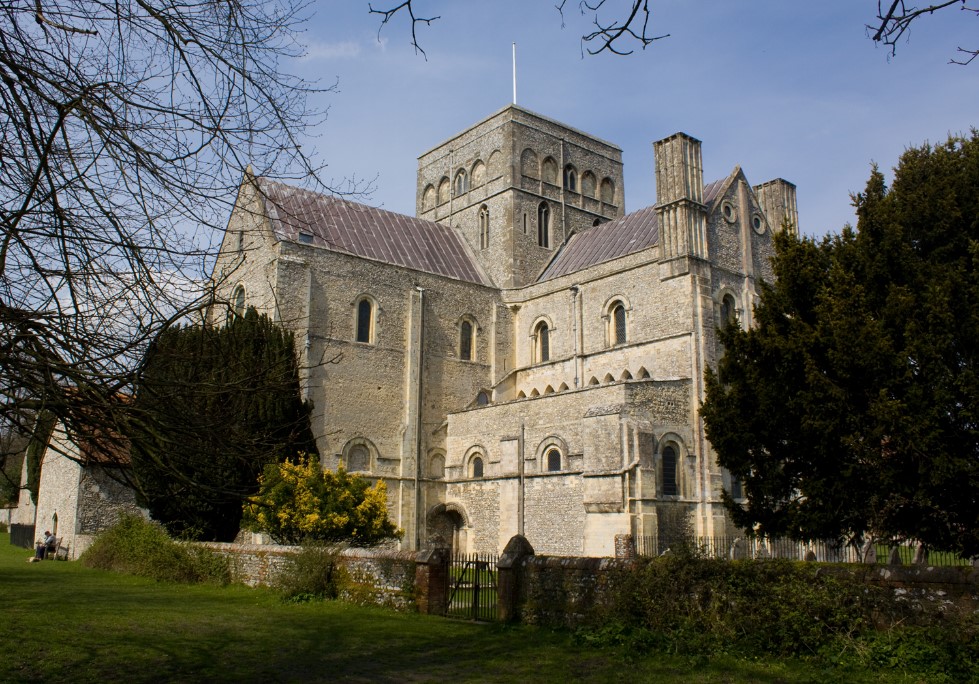
The oldest operational poorhouse is the Hospital of St Cross and Almshouse of Noble Poverty, a medieval almshouse in Winchester, Hampshire, England (Fig. 1). It was founded by Henry de Blois, Bishop of Winchester, grandson of William the Conqueror, between 1133 and 1136. It is the oldest charitable institution in the United Kingdom, built on the scale of an Oxford or Cambridge college. Most of its buildings and grounds are open to the public at certain times.
American Colonial Period
The first poorhouse opened in Boston, Massachusetts Bay Colony in 1664. Poorhouses were virtually unknown at the time because charity had always begun at home. “Outdoor relief” was provided through an Overseer of the Poor to poor persons living at home, outside of a poorhouse. Church wardens in early Virginia were charged with keeping records in vestry books of their parish’s dealings with the poor, and county clerks recorded financial information relating to care of indigent residents. Parishioners were paid for taking in the poor, bastard children, and children whose parents weren’t able to care for them (Fig. 2).
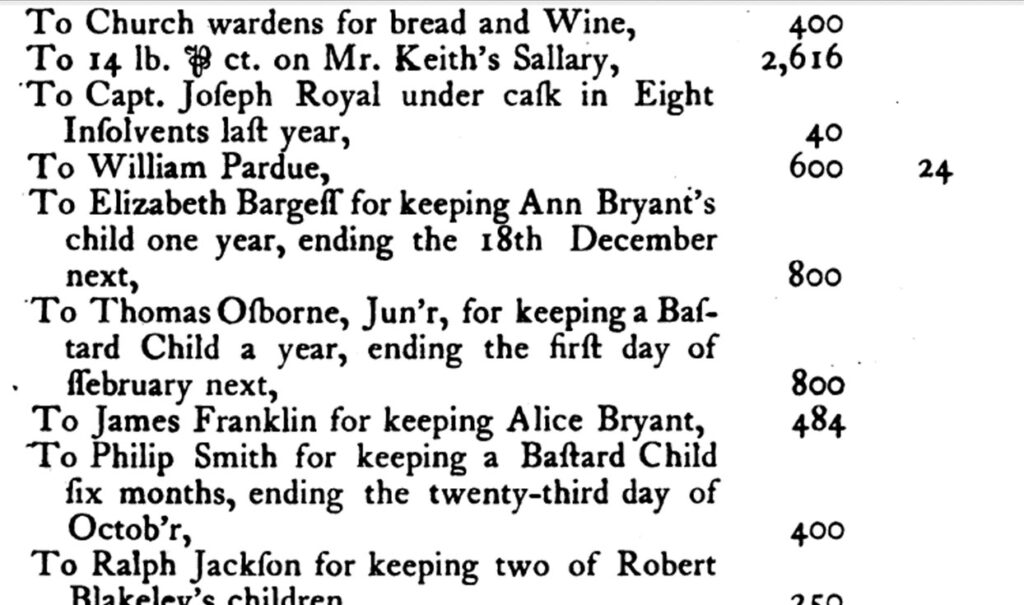
The 19th Century
With the onset of the Industrial Revolution beginning in the early 1800s, the number of county poorhouses increased, and were found all over the US throughout most of 1800s. During the Industrial Revolution, a factory system similar to England’s developed and included adoption of the poorhouse system. Some states required counties to establish and maintain this system.
Poorhouses were built with great optimism. They promised to be much more efficient and cheaper way to provide relief to paupers.A fervent popular belief held that housing such people in institutions would provide an opportunity to reform and cure them of bad habits and character defects that were assumed to be the cause of poverty.
Before state laws began to require establishment of county poorhouses, local communities had already discovered that housing paupers helped reduce the cost of poor relief. Small-town poorhouses were prototypes for later state-required county poorhouses. These places often instituted use of an adjacent farm on which paupers could work to raise their own food, thus making houses more self-sufficient and relying less on local tax funds. This became the origin of the term “poor farm.”
By 1875, in most states the State Board of Charities became responsible for regulating poorhouses. Laws were passed prohibiting children from residing in poorhouses and for removing mentally ill patients and others with special needs to more appropriate facilities. The federal government did not participate in social welfare for over 70 years following the 1854 veto of the “Bill for the Benefit of the Indigent Insane” by President Franklin Pierce, who argued that the federal government should not commit itself to social welfare, which he believed was properly the responsibility of the states. This tradition has continued and is in most cases codified in state law, although financial costs of such care have been shifted in part to state and federal governments.
The 20th Century
The poorhouse population became even more narrowly defined during the 20th century when social welfare legislation (workman’s compensation, unemployment benefits, Social Security) began providing rudimentary “safety nets” for people who would previously have been pauperized by such circumstances. Thus poor farms declined in use after the Social Security Act took effect in 1935, and most had disappeared completely by about 1950.
Two Methods of Caring for the Poor
Two basic methods existed for the care of indigent persons – outdoor and institutional. Outdoor relief consisted either of handouts of cash and provisions or an arrangement to board individual paupers with private families for a specified time. The other was institutional, which developed in many towns, especially from the 1750s onward, in which poorhouses, workhouses, or town farms were built where people would work for the town for their support.
Blending of the two methods in the colonial period was ultimately eclipsed as almshouses and workhouses emerged in 19th century as the dominant form of public relief for the indigent. The poor working for “their keep” reflected society’s attitude toward helping the poor and the place of the needy in society. Less commonly known were “poor auctions.” These actions were similar to indentured servitude. This was a historical practice in 19th-century Sweden, known as fattigauktion (‘poor auction’), but was abolished by the reformed Poor Law of 1918.
In the 18th-19th centuries communities were responsible for the care of poor people who were legal residents. To prevent vagrants or indigent from other places from becoming town charges, New England states had “warning out” laws intended to put pressure on or coerce “outsiders” to settle elsewhere. Then, as now, an overriding concern was to provide adequate assistance at the lowest possible cost. A common practice was to place the indigent in private homes through a “vendue” system (from the French verb “vendre,” (“to sell”). Records meticulously reflect the town’s payment for each week of subsistence for every pair of shoes and hose, every apron, pair of britches, and shirts provided to those who had become town charges. Here is an example of a vendue in Pittsfield, New Hampshire in 1785:
“To be Set up at Publick vandue at the dweling house of John Cram, Esqu., inholder of Pittsfield, at three of the clock in the afternoon of Said Day, the widow Kesiah Sargent and one child which have thrown themselves upon the town of Pittsfield and there to go one cow and also a Bed and some Bedding towards their Support and the Lowest Bidder is Deemed the purchaser of Said persons and is to Bid off for two months. Whoever Bids off Said woman and child and Refuses to keep Them Shall Pay the cost of vendue and Shall be Set up again by us.”
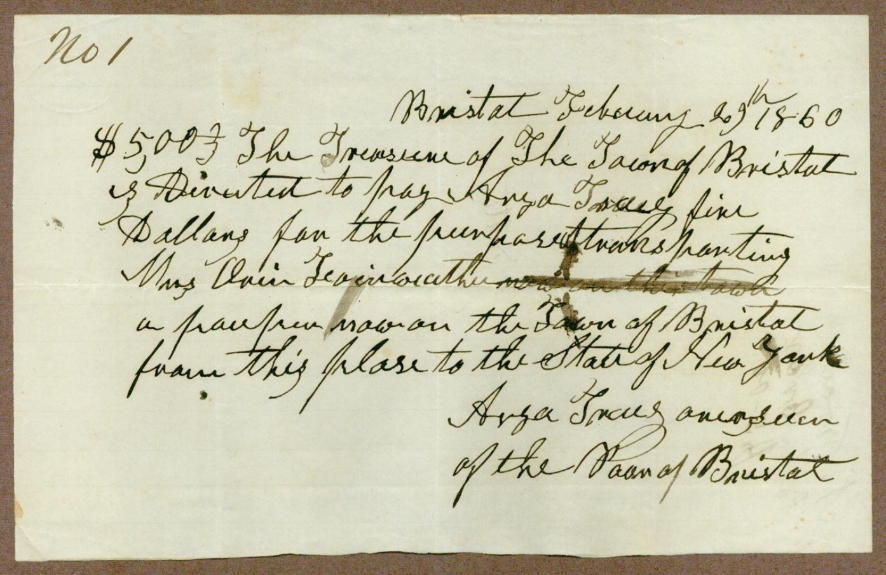
Poorhouses and Genealogy
Can’t find ancestor in the census? Consider the poorhouse. Often poor people are largely undocumented. Some were highly mobile and not homeowners, and so the census may have passed them by. They usually did not vote or pay taxes or serve on juries. There was no estate to settle and no need for a will. They may not have attended any church regularly enough to show up in church records. Even those whom you have been able to track only through the census may suddenly disappear with no record of their death. In any of these cases, the reason for not being able to find them is that they may be in poorhouse, possibly one that was away from their regular place of residence.
Depending on what records are available, surviving poorhouse records may provide sole documentation of the poor and indigent. We’re most fortunate when we can locate these records; when one farm closed in the 1940s, the final headmistress burned all the records!
Problem of Stereotypes: Who Actually Lived in the Poorhouse?
Stereotyping may be one reason why we don’t think to look for ancestors in a poorhouse. In the 1800s, a variety of people lived in poorhouses for short periods of time; not everyone who entered a poorhouse was there for life. We need to break out of stereotyping and anything else that limits research possibilities because we may find information in poorhouse records that may not otherwise be available.
So who lived in the poorhouse?
- Homeless persons and families who may have been burned out or flooded out of their homes
- Destitute persons and families who, for a time, could not afford to buy food, clothing, or fuel
- Victims of domestic abuse
- Unwed mothers
- Orphans
- Elderly people who were frail or ill and had nobody to care for them
- Seasonally unemployed workers who often were single men needing housing for the winter
- Occupationally injured workers who often worked in factories or on the canals or roads, or as lumbermen, etc.
- Handicapped people (mentally ill, mentally retarded, blind, physically handicapped)
- Sick people who had no money for treatment and may have suffered temporarily from the frequent epidemics of contagious diseases or from chronic diseases
How Were People Admitted?
Admission to a poorhouse was usually allowed by petitioning the court. Administrators used practical judgements about residency and judgements about the moral character of individual relief applicants in assessing applicants’ entitlement to public relief. But they were also deeply concerned with the larger issue of the moral character of the poor. This connected to a larger public discussion in America about the effect of relief on the character of recipients. Much discussion of poor relief revolved around the problem of separating the “undeserving“ poor from the “deserving” poor. An example of this is found in Bremer Co., Iowa.
A commission of three people (judge, doctor, lawyer) reviewed cases before a resident entered the facility and decided if placement at the County Farm was appropriate. Early in the history of the County Farm, residents appeared to be elderly or a person with a health problem such as alcoholism. In examining census information most residents were older adults, with occasional families coming for a period of time. Orphans or those whose parents were unable to care for them were transferred to orphanages or placed with a local family. During the early years mentally disabled people were transferred to Iowa State Hospital in Woodward. Persons judged to be mentally ill or violent were transferred to the Iowa State Mental Institution in Independence. Payments to outside institutions indicate that a number of people were sent out of the county for care. Records indicate that county residents were paid for witnessing the need for commitment of neighbors.
As with all records, sometimes mistakes occurred and residents were placed in the wrong facility for varying periods of time. In later years, many residents were mentally challenged and resided with their “family” for years at the County Farm. Just before it was closed, some individuals with drug dependency problems were placed there, which presented a difficult situation.
Sources of Poorhouse Information and Records
If any poorhouse records don’t contain names, they may direct you to sources that do. Some of these include:
- State/federal censuses
- Special census schedules
- USGenWeb county pages
- State Boards of Charities
- Commissioners Court/County Board of Supervisors
- Works Progress Administration inventories of county records (inventories of county records shows what records existed at that time, and where they were housed at that time)
- Death certificates (place of death may read “county farm” or other designation)
- Newspapers
- County or town annual reports (show residents as well as providers of goods and services; may contain information about those who resided in poorhouses and those who received “outdoor” poor relief outside the poorhouse itself)
- State resource guides
- Genealogical periodicals
- FamilySearch Library
- County histories
- A list of some county poorhouses by state is available here
With the establishment of state boards of charities, records became much more uniformly organized (Fig. 4). Boards required some standard form for recording admissions, discharges, and/or deaths of inmates. Boards’ bookkeeping records can contain valuable genealogical information.
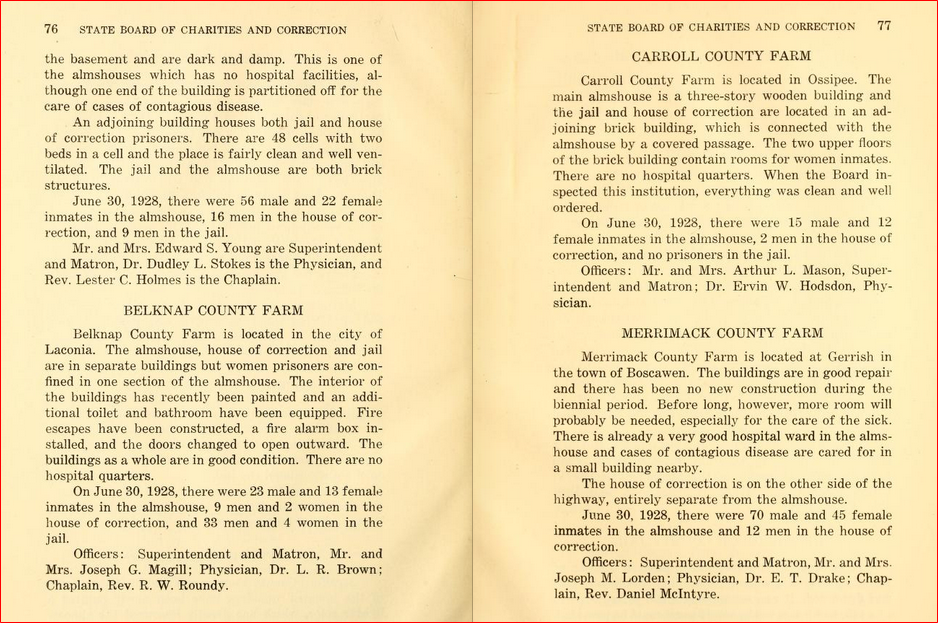
Contains information about each county farm and establishes laws about contents of county reports.
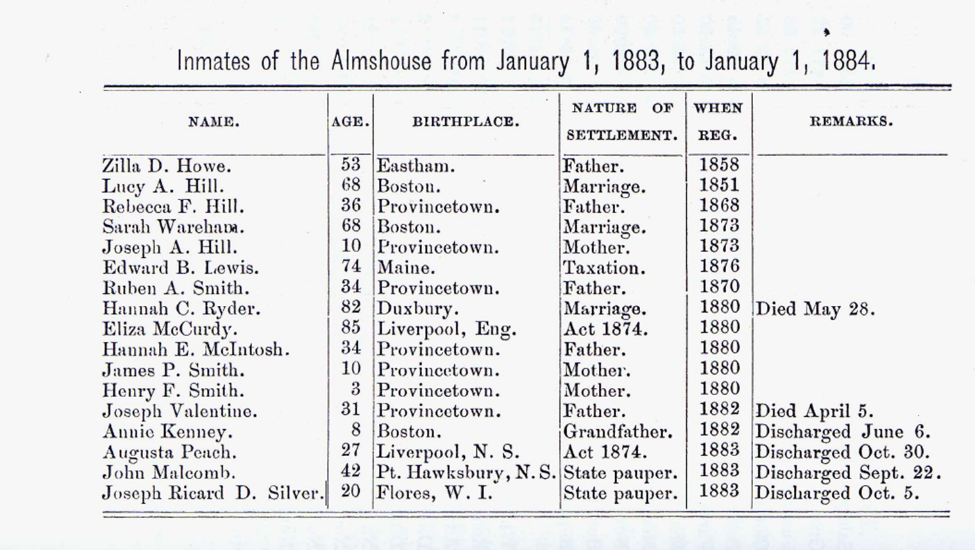
Do a Google search for your state using “state board of charity” and state name, or check with that state archive.
Poorhouses and Census Records
In census records, a poorhouse was treated as a household. It listed the superintendent and family, workers, and inmates. Since census records have been widely digitized, there are some strategies you can use to find ancestors in poorhouses. If using Ancestry, in the census search box, enter the state and county but no name. Instead, enter “inmate” as head of household or his or her occupation. For a keyword search, use almshouse, poorhouse, poor farm, county farm, or county home. Look at the page to see if a person is in county poor farm or county jail because “inmate” was used in both cases.
Sometimes census takers very considerately noted that a “household” was a poorhouse. Other times the only indication that “household“ was a poorhouse is that head of household’s occupation is “Keeper of Alms House,” “Keeper of the Poorhouse,“ “Keeper,“ or “Superintendent (Fig. 6)”. Also remember to check state censuses because they were taken between federal censuses, usually in years ending in 5. One instance of a special census (Fig. 7) is available on Ancestry.com: New York Census of Inmates in Almshouses and Poorhouses, 1830-1920 (bulk 1875-1920). Extant mortality schedules may note that a death occurred in a poorhouse (Fig. 8).
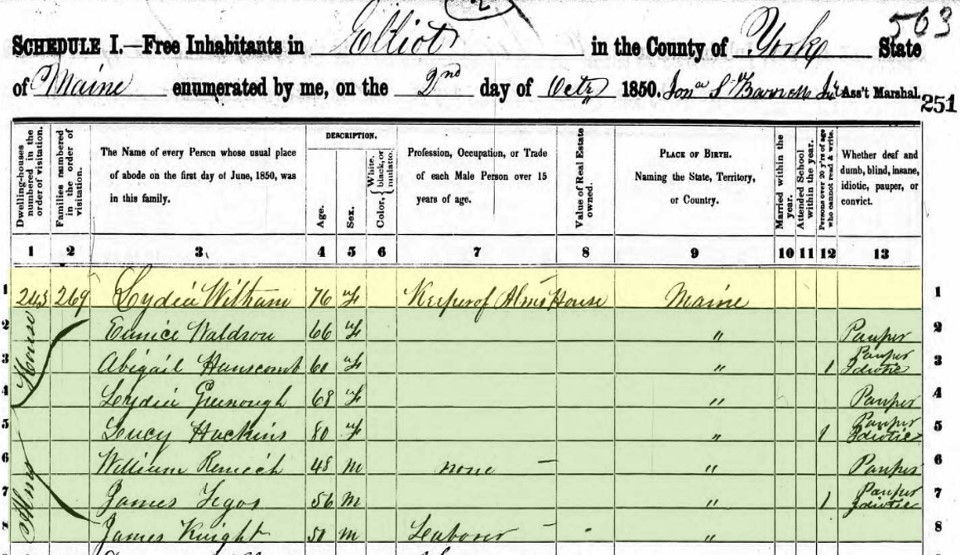
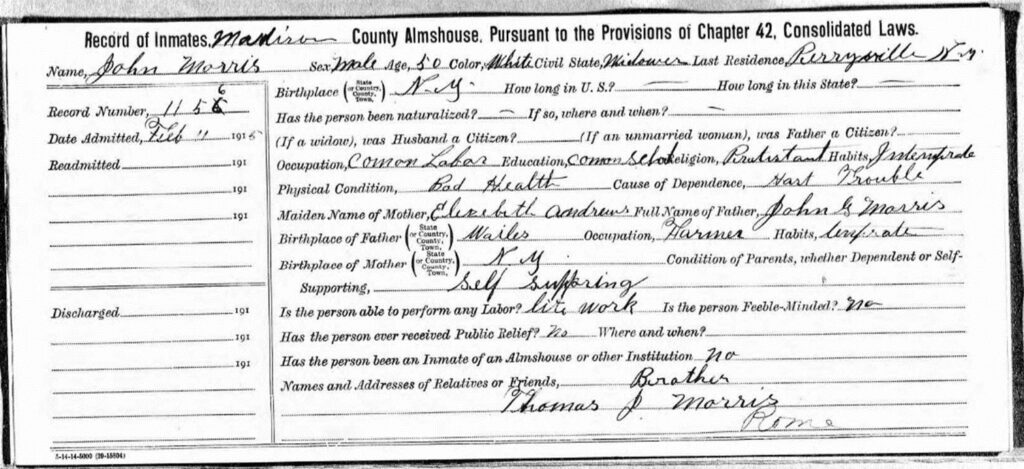
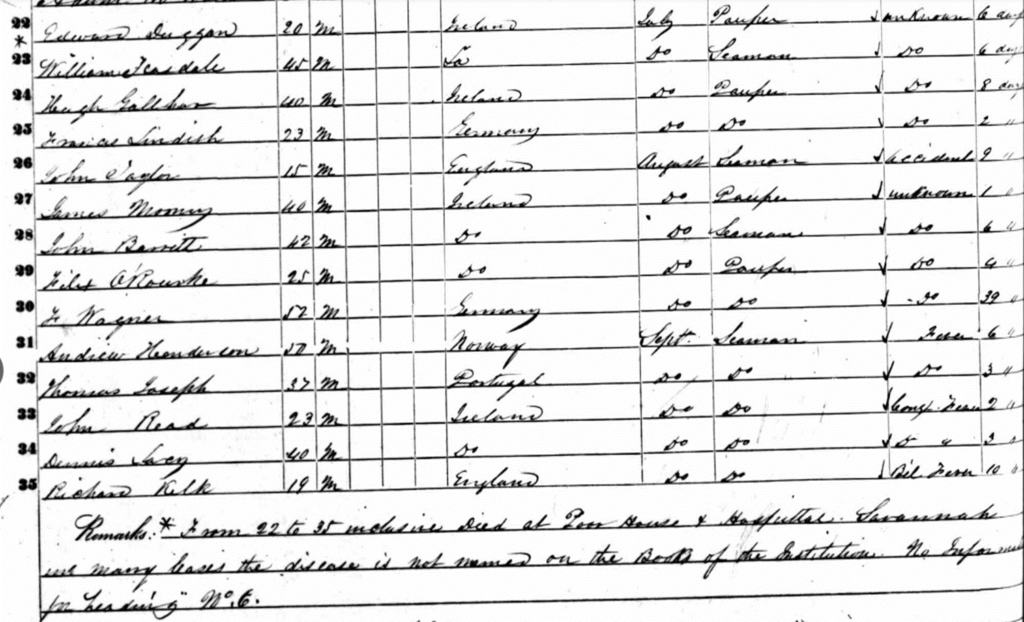
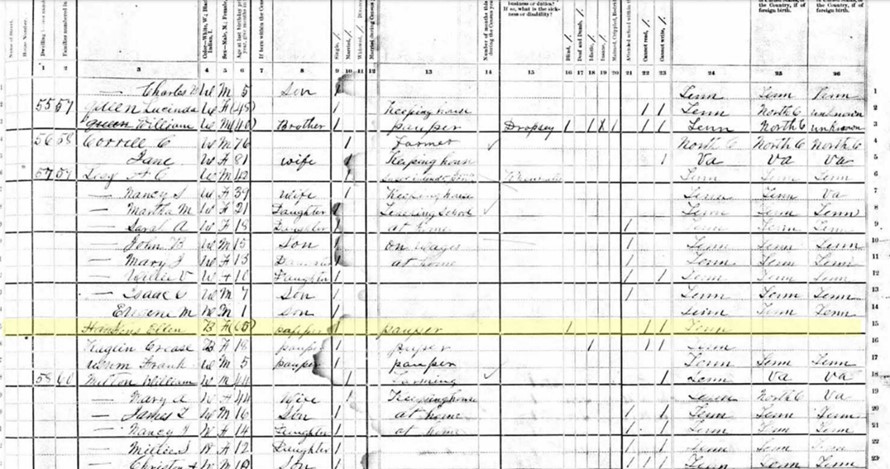

Be sure to look at any enumerator remarks, as their comments may tell you some interesting things about indigent care in that community. The Meigs Co. enumerator observed that “Under this head it will be proper to s[t]ate that there is only 3 inmates of the poor House at the time. The County has 3 Commi⨍sioners of the poor and find they can Support the paupers in familys out side of poor house at least cost to the County and perhaps better Cared for then at the poor house. The pauper Expences of the County at present is about $850.00 per annum. The charges upon the County for paupers during the Census year was about $1050.00(?).”
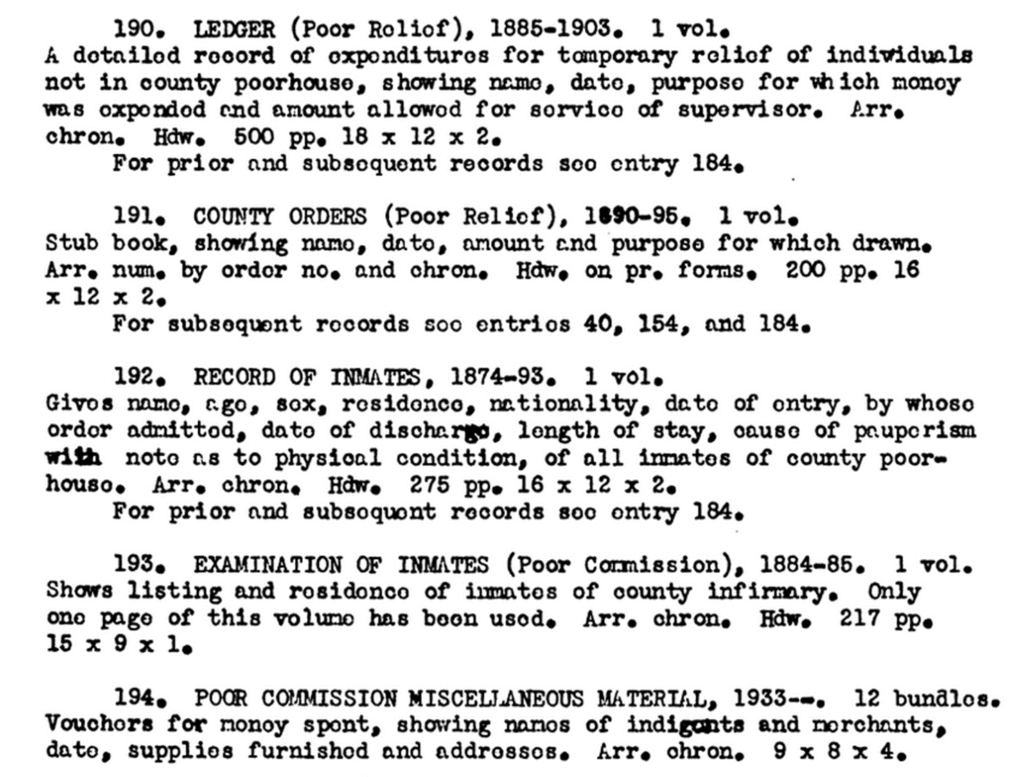
WPA Inventories
Works Progress Administration county inventories (late 1930s-early 1940s) include descriptions of holdings of the commissioners court, including poorhouse records, at that time and where they were housed. (Fig. 11). Over 600 volumes were published before funding ceased just before WW II.
Newspapers
If you learn that a relative spent time in a poorhouse, newspapers may provide additional information about the poorhouse, its surroundings, its management, and its residents that you can incorporate into your family history for a wider historical perspective (Fig. 12). It’s another example of reaching beyond facts and numbers to understand life as it was once known.
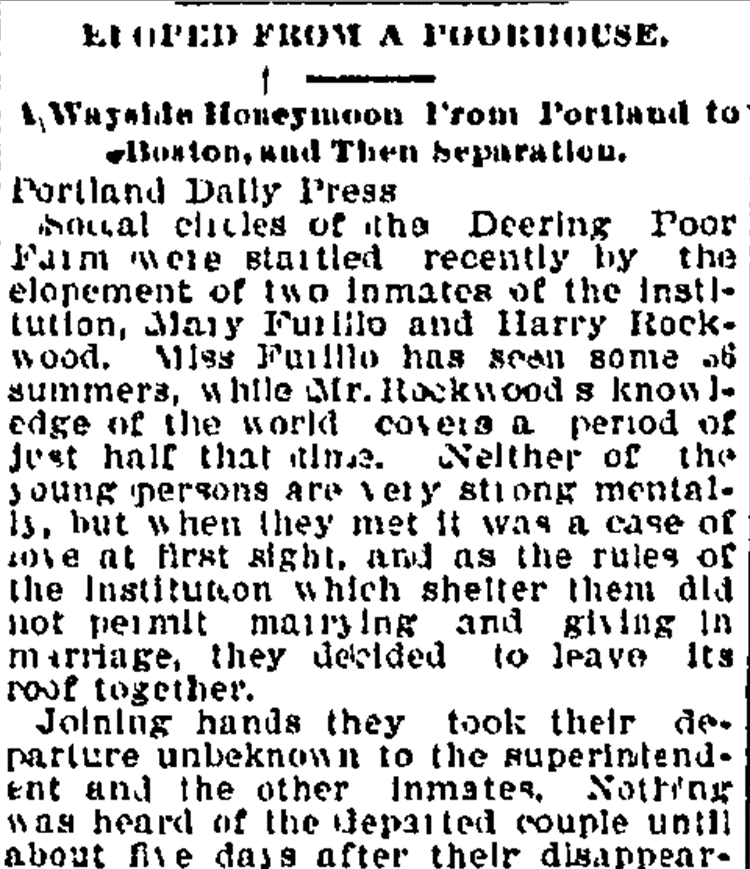
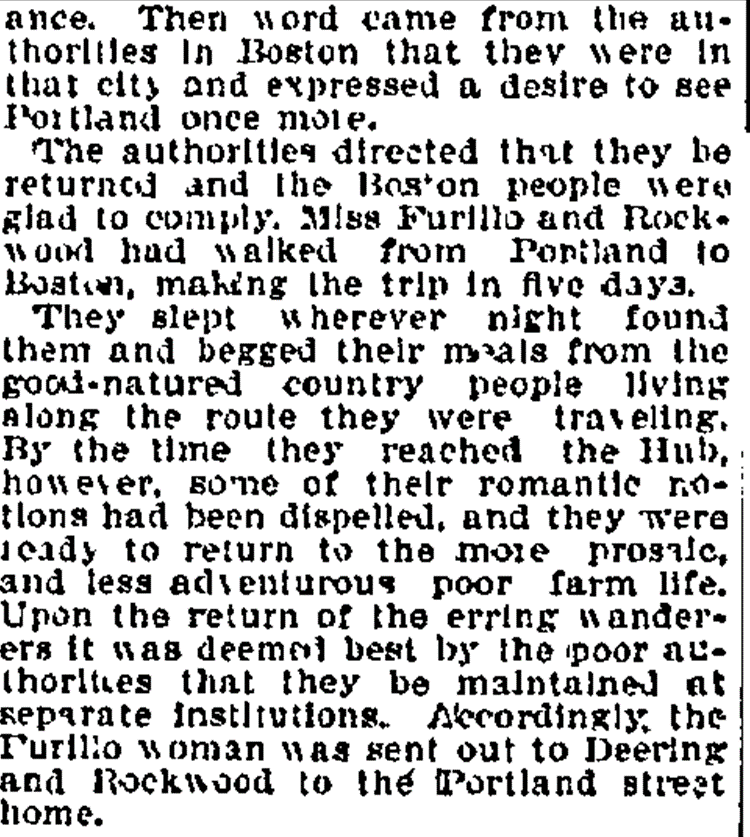
Obituaries may mention that someone died in a poorhouse (Figs. 13-14). Depending on the kind of information given, this presents an opportunity to learn more about the deceased.
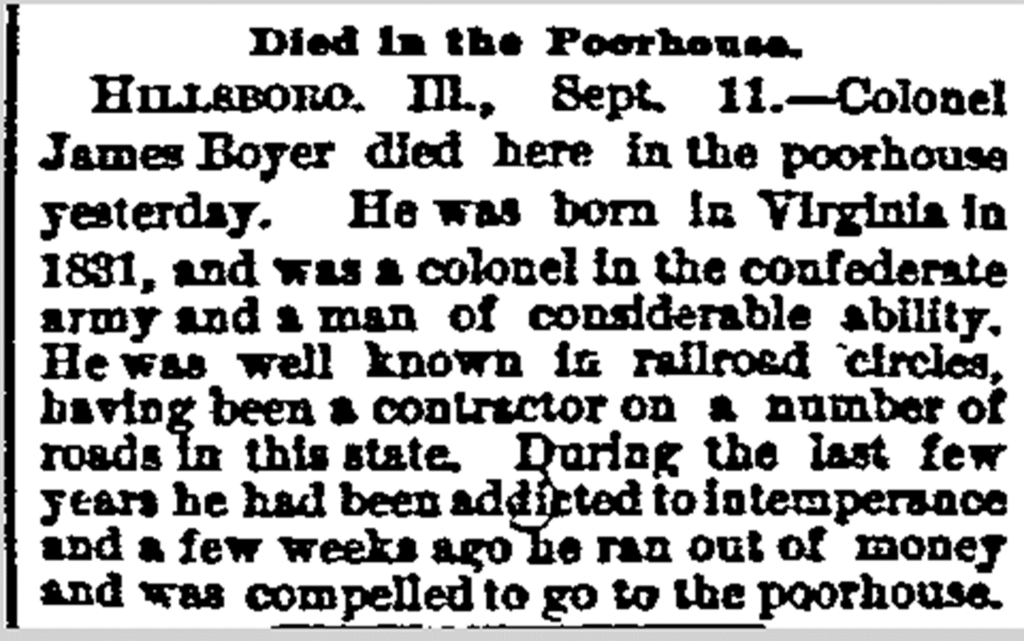
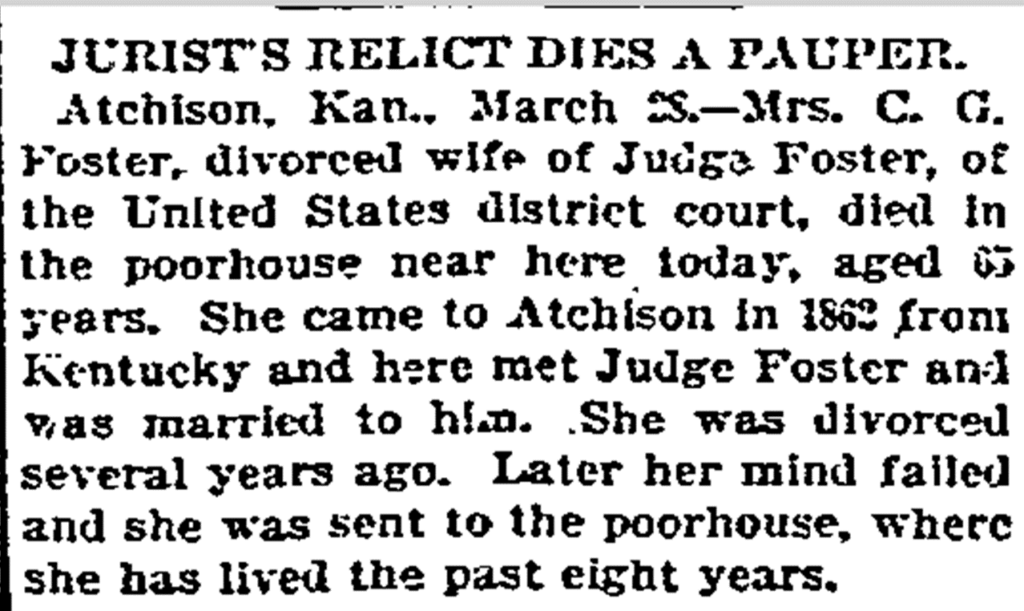
Duluth (MN) News-Tribune, March 29, 1896, p. 1.
State Resource Guides
These state resource guides are in the Grapevine Library genealogy collection and specifically mention poorhouse resources and information relative to that state.
- Carol Willsey Bell, Ohio Guide to Genealogical Sources
- Imogene Kinard Kennedy, Genealogical Records in Texas
- Carol McGinnis, Michigan Genealogy: Sources & Resources
- John T. Humphrey, Pennsylvania Research: County and Township Records
- Ann Smith Lainhart, Digging for Genealogical Treasure in New England Town Records
Ancestral Involvement with Poorhouses
Connections to the poorhouse weren’t necessarily based on being an inmate. Some individuals served on commissioners courts overseeing poorhouses (Fig. 3), while others provided food or services. Perhaps your ancestors were involved one way or another with the local poorhouse/almshouse. You can find evidence of this in census records, local reports, and/or state boards of charities.
Legacy
Eventually poorhouses evolved almost exclusively into nursing homes for dependent elderly people. They also left orphanages, general hospitals, and mental hospitals — for which they had provided the prototype — as their heritage. Their physical records may be found in county courthouses, county archives, local historical societies, state archives, state libraries, and colleges and universities. You can find additional sources for poorhouse information online at Poorhouse Story, Cyndi’s List, Internet Archive (WPA county inventories, mostly Illinois and Indiana counties), HathiTrust Digital Library, Google Books, and in other digital collections. Search engines can also provide good results using combinations of search terms such as “census”, “poorhouse”, “poor house”, “poor farm”, “almshouse”, “alms house”, “county farm”, “county board of supervisors”, and “state board of charities” + “[state or county name]”.
Remember the poorhouses, especially when you’ve looked “everywhere.”


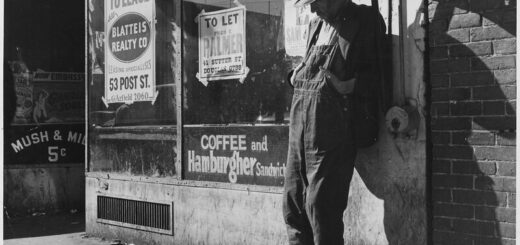
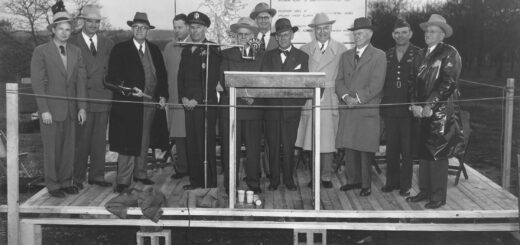
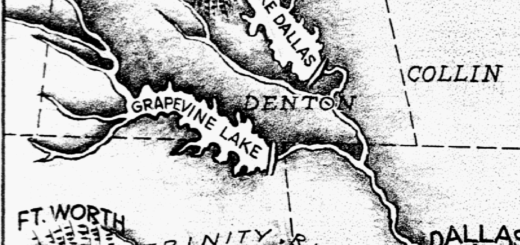
Recent Comments